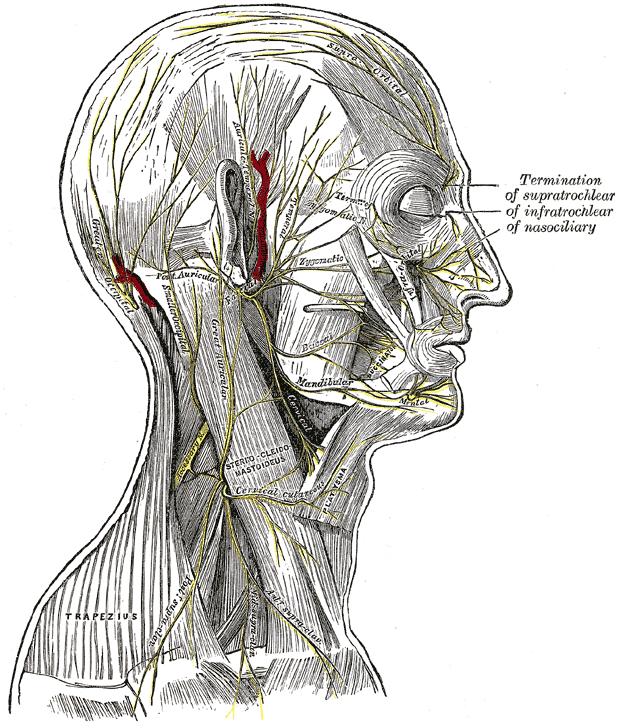[1]
Mulazimoglu S, Flury R, Kapila S, Linder T. Effects of a sensory branch to the posterior external ear canal: coughing, pain, Ramsay Hunt's syndrome and Hitselberger's sign. The Journal of laryngology and otology. 2017 Apr:131(4):329-333. doi: 10.1017/S0022215117000160. Epub 2017 Feb 8
[PubMed PMID: 28173896]
[2]
Takezawa K, Townsend G, Ghabriel M. The facial nerve: anatomy and associated disorders for oral health professionals. Odontology. 2018 Apr:106(2):103-116. doi: 10.1007/s10266-017-0330-5. Epub 2017 Dec 14
[PubMed PMID: 29243182]
[3]
Liu M, Wang SJ, Benet A, Meybodi AT, Tabani H, Ei-Sayed IH. Posterior auricular artery as a novel anatomic landmark for identification of the facial nerve: A cadaveric study. Head & neck. 2018 Jul:40(7):1461-1465. doi: 10.1002/hed.25127. Epub 2018 Mar 22
[PubMed PMID: 29566447]
[5]
Colbert SD,Davies J,Aldridge T,Brennan PA, Posterior auricular nerve found anterior to the cartilage of the external auditory meatus--a previously unreported variant. The British journal of oral & maxillofacial surgery. 2013 Jul
[PubMed PMID: 23159194]
[6]
Sensation loss after superficial parotidectomy: A prospective controlled multicenter trial., Grosheva M,Shabli S,Volk GF,Sommer B,Ludwig L,Finkensieper M,Wittekindt C,Klussmann JP,Guntinas-Lichius O,Beutner D,, Head & neck, 2017 Mar
[PubMed PMID: 28067982]
Level 1 (high-level) evidence
[7]
Kikuta S, Iwanaga J, Watanabe K, Kusukawa J, Tubbs RS. The Feasibility of Using the Posterior Auricular Branch of the Facial Nerve as a Donor for Facial Nerve Reanimation Procedures: A Cadaveric Study. Journal of oral and maxillofacial surgery : official journal of the American Association of Oral and Maxillofacial Surgeons. 2019 Jul:77(7):1470.e1-1470.e8. doi: 10.1016/j.joms.2019.02.043. Epub 2019 Mar 13
[PubMed PMID: 30959011]
Level 2 (mid-level) evidence
[8]
Blau I,Vaisbuch Y,Marom A, A new method for tracing the facial nerve trunk using the posterior auricular nerve. Clinical anatomy (New York, N.Y.). 2019 Apr
[PubMed PMID: 30664254]
[9]
Leckenby JI, Chacon MA, Rolfe K, Lichtman JW, Grobbelaar AO. Development of the interscutularis model as an outcome measure for facial nerve surgery. Annals of anatomy = Anatomischer Anzeiger : official organ of the Anatomische Gesellschaft. 2019 May:223():127-135. doi: 10.1016/j.aanat.2019.03.001. Epub 2019 Mar 22
[PubMed PMID: 30910682]
[10]
Lee JH,Oh TS,Park SW,Kim JH,Tansatit T, Temple and Postauricular Dissection in Face and Neck Lift Surgery. Archives of plastic surgery. 2017 Jul
[PubMed PMID: 28728320]

